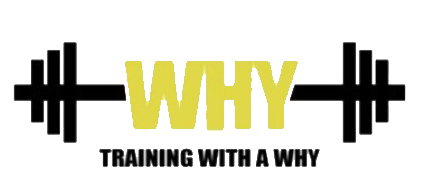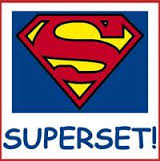We are all guilty of it. It being the routine we fall in at the gym. This can be a routine of multiple things including the same exercises, reps, sets, exercise order, etc. Everyone has their favorite way of doing things because it worked, at first. Routines are necessary in training, it’s how programs are built. An effective training regimen should follow some type of routine or plan. Each workout should build off the previous one. Dramatically changing things up every few weeks does not give your body time to experience and adjust to the stress training places on it. However, it is important to understand how muscle strength and growth takes place. Weight training is a stressor on the body, it literally tears the muscle fibers causing those fibers to grow back bigger and stronger. Those fibers grow back bigger and stronger so that the body can handle the stress that is placed upon it, in this case the weights being lifted. Well, if the body feels that the stress placed upon it is not significant enough to stimulate change it simply won’t change, in our case grow bigger and stronger. This is why people make beginner gains, where everything the body is experiencing is new and thus it needs to grow. After a period of time the body is strong and big enough to handle that stress and doesn’t need to change anymore. This is where you have to be aware and again start putting new stress on your body. These following methods are a great way to put different stress on your muscles and can be done with almost every type of exercise and body part.
Supersets
Supersets are probably the most common of the methods I will discuss in this article. Supersets combine two exercises back to back with no rest in between. This is purely a bodybuilding technique and is a great way to keep the blood in the muscle instead of resting for an extended period of time. This is also a great technique to use if you are short on time. They can be done a couple different ways.
- Antagonist and Agonist Supersets (A true superset)
o Works opposing muscle groups (i.e. chest and back, biceps and triceps, etc.)
- Compound sets
o Works same muscle with both exercises (hammer curls and preacher curls, etc.)
o When executing compound sets it is usually a good idea to start with the harder exercise.
o I like to pick two exercises that hit the same muscle but from two different angles.
Drop Sets
Drop sets are used so that you can continue the set even after you reach muscular fatigue. This is a great technique to ensure that every last muscle fiber of the area being worked is stimulated which is what we want and need to induce change. There are two different ways you can perform drop sets.
- Conventional Drop Set
o You lighten the weight once you reach muscular fatigue in order to continue the set.
o This is usually performed on the last set of the exercise. For example, on your last set of dumbbell lateral raises you complete 15 reps, you immediately drop weight in order to complete another 12 reps. If you choose you can even go further and do a second drop set of about 10 reps.
o You can also do drop sets after each set of the exercise you are doing instead of just the last one but be prepared to be exhausted afterwards.
- Mechanical Drop Set
o You change your hand placement from most difficult to less difficult in order to continue the set.
o An example of this that I love to do is with EZ bar curls. Start with a wider grip because it’s the harder grip. Execute the set until you can’t get another rep. Then immediately change your hand placement to the easier inside grip and continue the set.
Forced Reps
Forced reps are probably the least common and most difficult to do of these three methods. If you train with a workout buddy they are easier to add into your program than if you lift by yourself. The reason being is that you need a spotter to help you. As with drop sets, forced reps allow us to continue the set once we hit muscular fatigue. The difference is that you don’t have to lighten the weight with forced reps since your buddy is physically helping you move the weight. An example of this would be if you put 185 pounds on the bench press and pressed it 6 times by yourself and another 4 times with your spotter helping you press the weight up to finish the set. Note: this is not the same thing as walking into the gym like a hard ass and constantly putting weight on the bar that is 50 pounds too much and having your spotter save your life over and over again. I caution that these are another great way to stimulate every muscle fiber in the area being used but this is also the method that I would use less often than the previous two mentioned. The reason I say that is because of two reasons; one, they are very taxing on the body and two, I worry that people will start using them too often. The goal should still be for you to physically get stronger and use heavier and heavier weights instead of your buddy constantly lifting the weight for you. But like the previous mentioned methods this is a great technique to change things up.
Experiment
All three of these methods work to create a stimulus for change. If you are continuously doing conventional sets and have seen your progress slow or stop I highly suggest adding one of all of these methods in your routine. Try at least one a workout. Keep at it for a few weeks, step back and evaluate the results and then try something else if you need to. What I like about suggesting these methods to people that have never tried something like this before is that it forces them to go hard, maybe harder than there used to and forces them to experience what muscular fatigue actually feels like. Be sure to let me know how these work for you!
As always thanks for reading and be sure to subscribe to the site to stay up to date on all the new articles coming soon.


